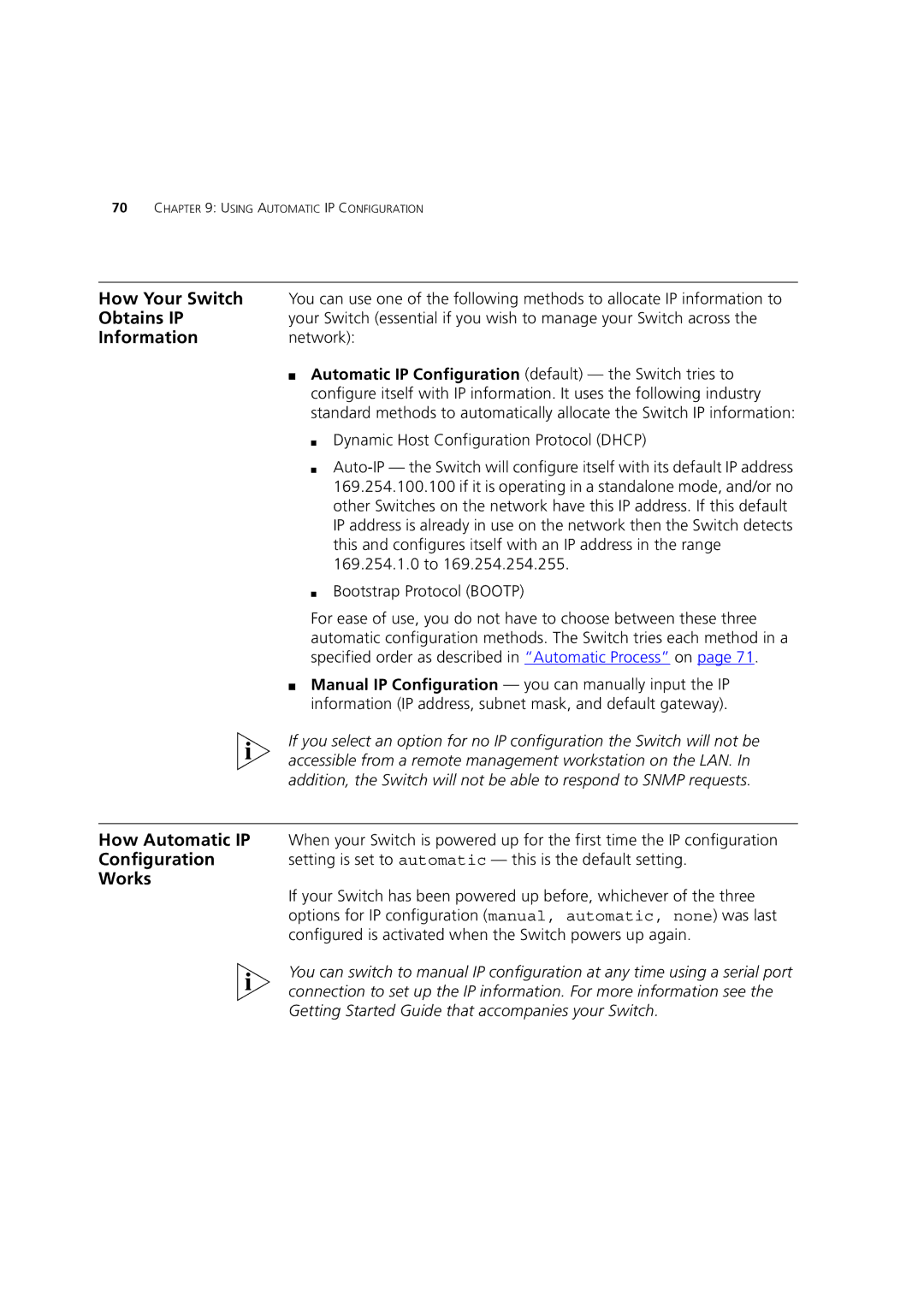
70CHAPTER 9: USING AUTOMATIC IP CONFIGURATION
How Your Switch | You can use one of the following methods to allocate IP information to |
Obtains IP | your Switch (essential if you wish to manage your Switch across the |
Information | network): |
| ■ Automatic IP Configuration (default) — the Switch tries to |
| configure itself with IP information. It uses the following industry |
| standard methods to automatically allocate the Switch IP information: |
| ■ Dynamic Host Configuration Protocol (DHCP) |
| ■ |
| 169.254.100.100 if it is operating in a standalone mode, and/or no |
| other Switches on the network have this IP address. If this default |
| IP address is already in use on the network then the Switch detects |
| this and configures itself with an IP address in the range |
| 169.254.1.0 to 169.254.254.255. |
| ■ Bootstrap Protocol (BOOTP) |
| For ease of use, you do not have to choose between these three |
| automatic configuration methods. The Switch tries each method in a |
| specified order as described in “Automatic Process” on page 71. |
| ■ Manual IP Configuration — you can manually input the IP |
| information (IP address, subnet mask, and default gateway). |
| If you select an option for no IP configuration the Switch will not be |
| accessible from a remote management workstation on the LAN. In |
| addition, the Switch will not be able to respond to SNMP requests. |
|
|
How Automatic IP | When your Switch is powered up for the first time the IP configuration |
Configuration | setting is set to automatic — this is the default setting. |
Works | If your Switch has been powered up before, whichever of the three |
| |
| options for IP configuration (manual, automatic, none) was last |
| configured is activated when the Switch powers up again. |
You can switch to manual IP configuration at any time using a serial port connection to set up the IP information. For more information see the Getting Started Guide that accompanies your Switch.
